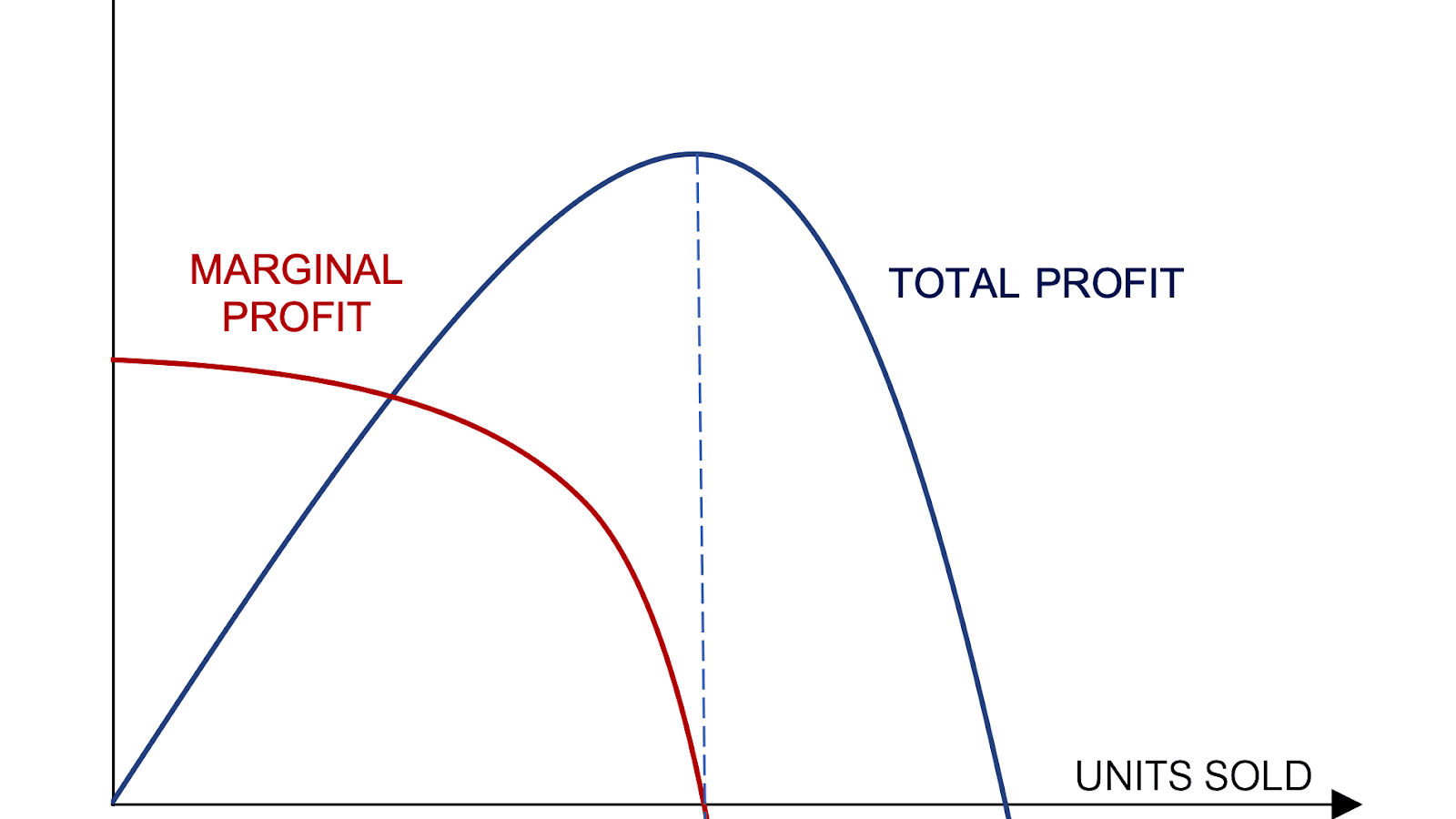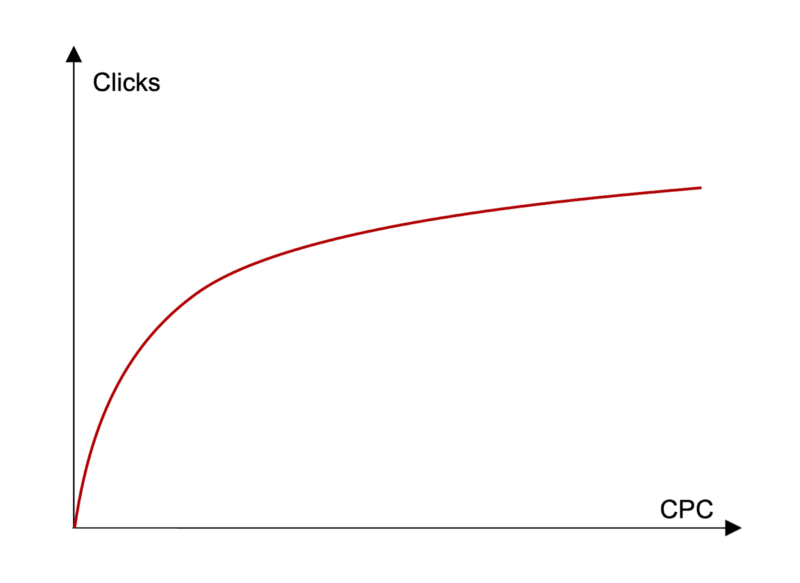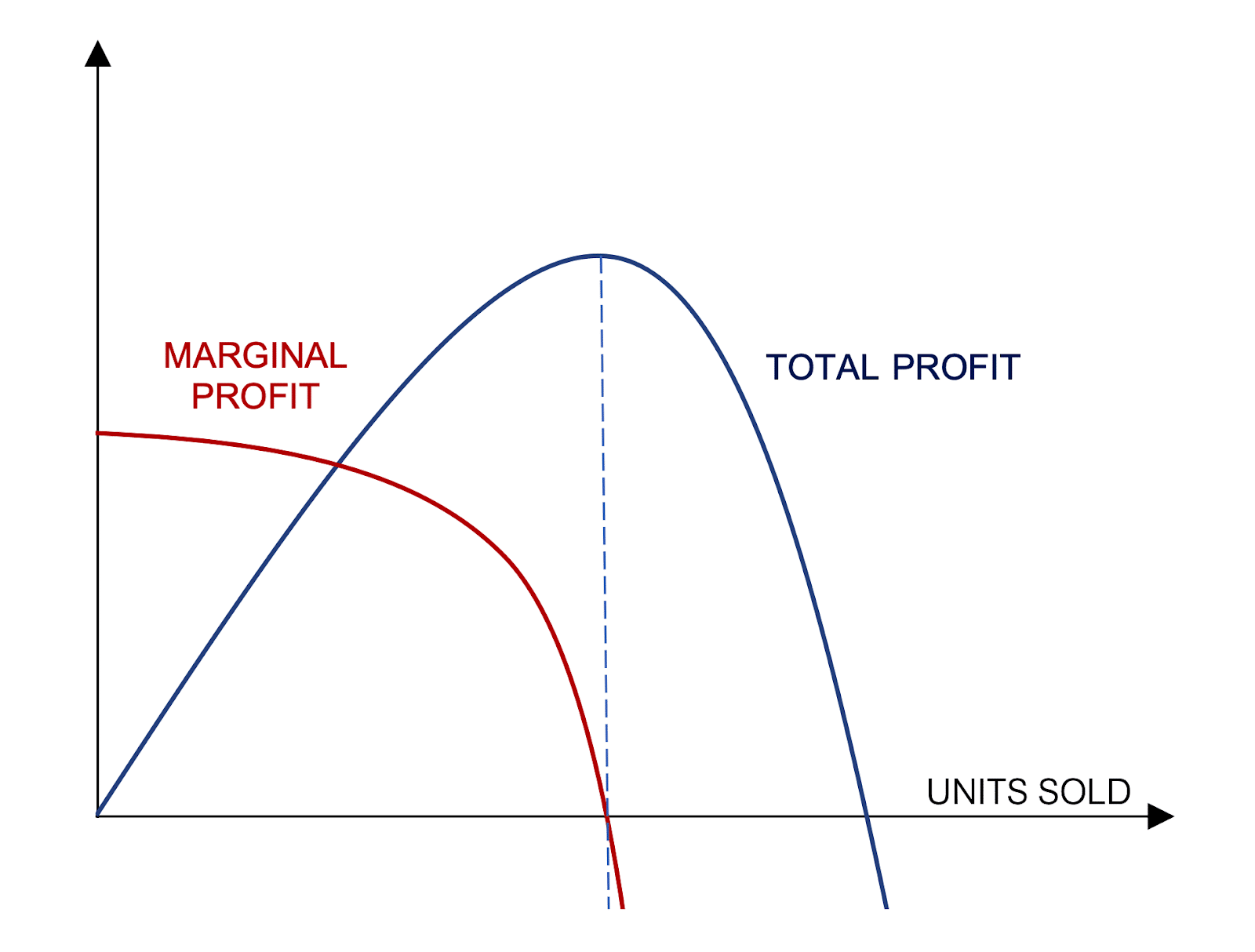
PPC is a tough game – you have to accept it
To get results from paid search, you’ll need to deliver better campaigns and increase your bids, which drives costs up.
However, increasing your bids won’t always mean more clicks. Eventually, you’ll reach a point where increased bids will only return little to no gain.
This is the law of diminishing returns at play. When running PPC campaigns, you are contending with this concept and many other factors outside your control.
In this article, we’ll explore the law of diminishing returns and various factors making paid search even more demanding today. This will help you set better expectations when assessing your PPC performance.
The law of diminishing returns
In economics, the law of diminishing returns states that as an organization increases its investment in a specific area, the rate of profit generated by that investment will eventually reach a point where it cannot continue to rise, assuming that all other variables remain constant.
For this reason, additional investment in that area will result in a decreased rate of return. At a certain stage of expansion, the return on investment that applies to additional units produced (marginal ROI) reaches a negative value.
Beyond this point, the total outcome will start declining. Even if it remains positive, it is not as high as the maximum.

This principle highlights the importance of finding the optimal level of investment to maximize the overall profit. The “sweet spot” is where the marginal ROI changes from positive to negative, specifically where the marginal return equals zero.
As every resource is limited, we observe that the supply shows decreasing responsiveness to the price change, and eventually does not matter how high the price is. The supply won’t be higher. This phenomenon is described as the law of diminishing elasticity.
Price elasticity (E) measures the responsiveness of the demand or supply to a change in the price of a good or service. It is calculated as the percentage change in the quantity of a good or service demanded or supplied in response to a percentage change in its price.

If the price elasticity is greater than one, the demand or supply is said to be elastic, meaning that a slight change in price leads to a relatively larger change in the demand or supply. If the price elasticity is less than one, the demand or supply is said to be inelastic.
Why are CPCs so high?
The laws of diminishing returns and elasticity apply to advertising.
To generate more traffic and conversions through PPC, you have to be more aggressive and competitive, increasing bids and, in turn, accepting higher conversion costs.
Increasing cost per click (CPC), however, leads to smaller and smaller increases in traffic. Eventually, you'll reach a point when there's no chance to get more traffic from a specific keyword (i.e., if the ad ranks #1 for all searches with 100% impression share).

The law on diminishing returns is also reflected in the total budget. You can see how these costs can change in the Google Ads Performance Planner, as shown in the illustration below.

In most cases, the relationship will be fairly straightforward for campaigns that are not under or overinvested. To get 10% more traffic, you need to accept a ~10% higher conversion cost or a ~10% lower return on ad spend (ROAS).
This means that Google's typical price elasticity of supply (the relative ratio of traffic increase to CPC increase) is 1.
Why is this the case? If a vendor increases their margin by 10% and loses 20% of their customers, this operation will result in a loss, and prices will likely be too high.
If a 10% increase in margin only causes 5% of customers to leave, the seller will increase their profits, and previous prices were too low.
The point at which the price is most optimal for the seller is where a 10% increase in margin results in a 10% decrease in the sales volume, making the change neutral for profits. In other words, the sales profits are highest if the price elasticity of demand is 1.
For Google, the sales margin virtually equals advertising revenue because the variable costs of the ad impression and click are negligible.
To maximize their profits, they should maintain a price elasticity of 1 – which explains how the auction algorithm works and why this regularity exists on the market.
Why does it cost so much?
In PPC, the natural consequence of the law of diminishing returns is a non-linear increase in budget to scale the campaign.
With elasticity E=1, which is typical for the market, doubling the traffic and sales volume is associated with doubling the CPC, resulting in a four-fold increase in budget.

At other levels of elasticity, these proportions will be different. But it is unrealistic to think that doubling the budget will lead to doubling sales in a given channel.
Marketing and business plans often reflect such expectations, only to fall through later. Expansion is costly, and the truth is even more bitter than this.
Google and Meta are here to do business
The cost of acquiring an additional click (i.e., the marginal cost per click or CPCm) is almost always higher than the actual CPC. By definition:

Also, by definition, the elasticity:

Therefore:

It means that at E=1, buying additional clicks is twice more expensive than the current cost per click. The same calculations apply to Effective Revenue Share (ERS = Cost / Revenue)

Advertisers benefit from investing in advertising as long as the marginal cost is lower than their profit margin (i.e., they get additional profit through advertising).
When the marginal effective revenue share reaches ERSm=1, advertising costs consume the entire revenue. Further, expansion will have negative marginal revenue and the total revenue will start to decrease. Thus, the campaign generates maximum total profit when:

That is:

As ROAS = 1/ERS = ROI + 1, this formula can be written as ROAS = 1 + 1/E or ROI = 1/E.
A simple formula can define the areas of under and overinvestment and the optimum level.

If E = 1 (the typical market elasticity), the maximum total profits from advertising occur when ROI = 100% or ERS = 0.5.
It means that, on average, advertisers increase their profits until they spend 50% of their profit (without considering fixed costs) on PPC ads.
Of course, particular advertisers who advertise more or less aggressively may be in a different area of elasticity than E=1. Therefore, the ERS/ROAS/ROI maximizing advertiser profits will be higher or lower.
For every $1 invested in Google search, U.S. companies earn $2. This is how Google wants to see it, but it also means that companies give half their profits to these tech giants.
There's no way around it
The laws of economics and the free market put businesses in a situation where Google, Meta and other ad platforms get half their sales margin before fixed cost.
Whether we like it or not, these are the rules of advertising. Understanding how the system works makes it easier to create realistic expansion plans and avoid disappointments.
The post PPC is a tough game – you have to accept it appeared first on Search Engine Land.
from Search Engine Land https://searchengineland.com/ppc-tough-game-394477
via free Seo Tools